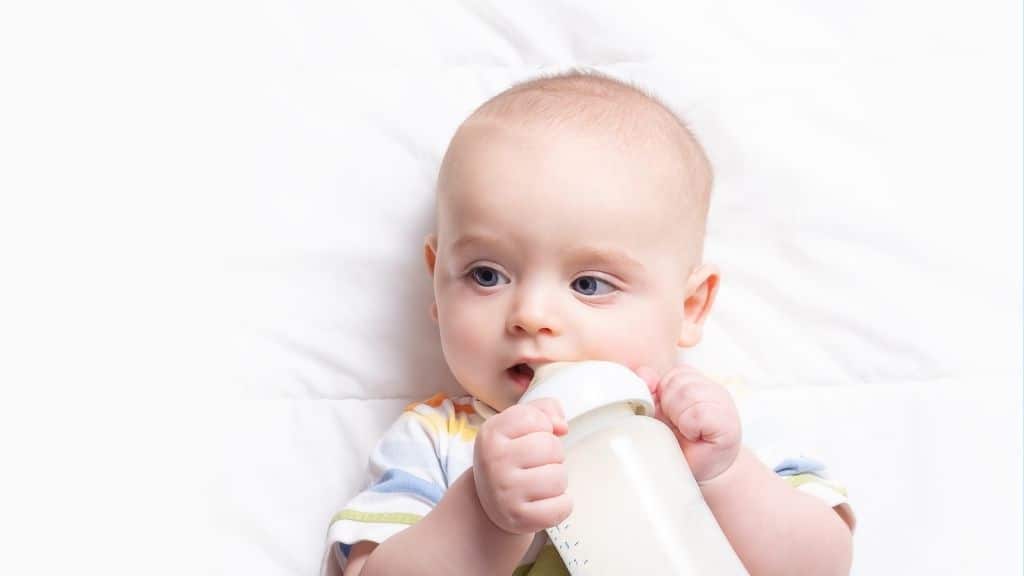
Table of Contents
Breastfeeding is typically a hassling process, especially for first-time moms, and comes with a bunch of doubts like, is my baby getting enough milk? Is he/she properly latching? Can breasts have an oversupply of milk, and on and on.
During those times when you can’t warm a bottle or when it’s the middle of the night and your baby is hungry and wailing, you must wonder and hope that babies can be fed cold breast milk, right out of the fridge, from the stock. Now, that would have made life just easier, eh? So is cold breast milk good for your little chipmunk? Let’s explore that and more.
Cold Breastmilk: To Warm Or Not? That is the question!
Children’s Hospital of Philadelphia states that premature babies cannot properly regulate their body temperature as they have a significantly low amount of body fat. So, sometimes young babies need the milk to be warmer to prevent any more loss of temperature. If your baby is a preemie or if you live in a place with cold weather, it will be best to warm the milk before you feed it to your child. It can be said that there isn’t an ideal temperature for breastmilk but of course, it should not be too hot to burn the baby.
Consider your baby’s preferences too when deciding to feed warm or cold milk. It could shock your child if it suddenly comes to have frigid milk in its mouth. But if your baby is happy drinking it then you can continue feeding the same.
At the best, your baby would swat the incoming bottle or turn their head away if the temperature was not to their liking. Remember to keep an eye out for these signs of course. you can’t straight up ask your baby what kind of drink would he/she prefer like a breast milk barista.
How To Warm Up Cold Breast Milk?
The thawing or warming of milk is time-consuming but remember to do it properly so that your milk does not lose its nutritional value. Microwaving breast milk, the easiest and most convenient way to heat up cold milk might not be such a good idea. Microwaving does not heat the milk evenly which may cause hot spots in the milk and potentially burn your baby’s mouth. Also, microwaves destroy all kinds of nutrients in the milk that would have otherwise been beneficial to your baby. Ideally, the best way to heat breast milk is to create a double boiler or to keep the breast milk in a pan of boiling water and heat it up. This way, none of the nutrients will be lost.
You should also always make sure to test the temperature of the milk after heating by sprinkling a few drops on your wrist. The milk should feel warm and not hot. Do not forget to swirl the milk to mix the fat as there might be chances of the milk fat separating. The little may not always finish the bottle so you can feed the leftover milk within two hours after the baby has finished feeding.
Must-Know Facts About Cold Breast Milk
- Ideal temperature: According to a study published in PLOS One in the year 2015, “human milk is often heated in electrical-based bottle warmers that can exceed 80 degrees Celsius, a temperature at which many beneficial human milk properties disappear”. Eighty degrees celsius is 176 degrees Fahrenheit. In a study published in Paediatric Research, it was found that enzymes present in breast milk start deteriorating at 120 degrees Fahrenheit.
- Period of time it can be left out: Breast milk is not recommended for consumption if left at room temperature after 4 or 8 hours, depending upon the warmth of the room. So if you forget to put your pumped supply into the refrigerator or fridge, the breast milk is as good as none. It’s okay to leave out the bottle for an hour or two but if it exceeds the 4 to 8 hours time frame, the milk will most likely be prey to bacterial growth.
- Swirl that baby cuppa: Colder milk tends to stick to the sides of the bottle which can be tricky to clean off. Now, what part of the milk sticks to the bottle? The fat. This means the most important factor required for the baby’s growth is lost. So remember to swirl the cold milk before feeding it to your child.
Cold Breast Milk Closing Thoughts
Next time you or your partner wakes up bleary-eyed by your baby’s cries for food, you can happily feed your kid a cold bottle but of course, remember to test the temperature as you don’t want to shock your child. An ice-cold bottle is absolutely a no-no even if your baby’s surprised face looks cute at the taste of it. Be rest assured that a cold bottle with the aforementioned points to remember is safe for your child’s health.










